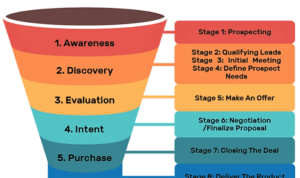Kicking off with Understanding Brand Positioning, this opening paragraph is designed to captivate and engage the readers, setting the tone for what’s to come. Brand positioning is more than just a marketing strategy—it’s a powerful tool that helps companies stand out in a crowded marketplace. As we delve into the key elements, strategies, and communication methods, get ready to unlock the secrets to building a strong brand identity that resonates with your target audience.
Definition of Brand Positioning: Understanding Brand Positioning

Brand positioning in marketing refers to the strategic process of creating a unique image and identity for a brand in the minds of the target market. It involves establishing a distinct place in the market that differentiates a brand from its competitors and resonates with consumers.
Examples of Successful Brand Positioning Strategies
- Apple: Positioned as an innovative and premium technology brand, focusing on simplicity and user-friendly design.
- Nike: Positioned as a performance-driven athletic brand, emphasizing empowerment and inspiration for athletes.
- Coca-Cola: Positioned as a timeless and refreshing beverage brand, with a strong emphasis on happiness and togetherness.
The Importance of Brand Positioning in Creating a Competitive Advantage
Brand positioning is crucial for creating a competitive advantage in the market as it helps to build brand loyalty, attract target customers, and increase brand equity. By clearly defining the unique value proposition of a brand and effectively communicating it to consumers, companies can differentiate themselves from competitors and establish a strong presence in the market.
Elements of Brand Positioning
Effective brand positioning relies on several key elements that work together to shape how a brand is perceived in the market. Brand image, brand identity, brand differentiation, target audience, and market research all play crucial roles in defining a brand’s position and standing out from competitors.
Brand Image
Brand image refers to how consumers perceive a brand based on their interactions and experiences with it. It is essential for a brand to cultivate a positive and consistent image that resonates with its target audience. This perception can be influenced by factors such as brand messaging, visual identity, product quality, and customer service.
Brand Identity
Brand identity encompasses the visual and verbal elements that help distinguish a brand from others. This includes the brand’s logo, colors, typography, tone of voice, and overall aesthetic. A strong brand identity not only helps in creating brand recognition but also contributes to building trust and loyalty among consumers.
Brand Differentiation
Brand differentiation involves highlighting what sets a brand apart from its competitors. This could be in terms of unique features, benefits, values, or positioning in the market. By clearly communicating these points of differentiation, a brand can carve out a distinct space for itself in the minds of consumers.
Target Audience and Market Research
Understanding the target audience and conducting thorough market research are essential steps in defining brand positioning. By identifying the needs, preferences, and behaviors of the target market, a brand can tailor its messaging, products, and overall strategy to effectively connect with consumers. Market research also helps in analyzing competitor positioning and identifying opportunities for differentiation.
Strategies for Developing Brand Positioning
When it comes to developing a strong brand positioning, companies often utilize various strategies to set themselves apart from competitors and connect with their target audience. Analyzing competitors’ brand positioning is a key step in creating a unique strategy, while storytelling and emotional branding can further enhance brand positioning by creating a deeper connection with consumers.
Analyzing Competitors’ Brand Positioning, Understanding Brand Positioning
Before developing your own brand positioning strategy, it’s important to take a close look at your competitors’ positioning. By analyzing their strengths, weaknesses, target audience, and messaging, you can identify gaps in the market that your brand can fill. This information can help you differentiate your brand and create a unique positioning that resonates with your target customers.
Storytelling and Emotional Branding
Storytelling is a powerful tool in brand positioning, as it allows companies to create a narrative that captivates consumers and builds an emotional connection. By sharing the story behind the brand, its values, and its mission, companies can engage with customers on a deeper level and stand out in a crowded marketplace. Emotional branding, on the other hand, focuses on creating an emotional bond with consumers through marketing campaigns that evoke feelings of joy, nostalgia, or empowerment. By tapping into consumers’ emotions, brands can create a lasting impression and build loyalty among their target audience.
Communicating Brand Positioning

In order to effectively communicate brand positioning to the target audience, companies utilize various methods and channels to ensure their message is conveyed clearly and consistently. This helps create a strong brand image and connect with consumers on a deeper level.
Methods and Channels for Communicating Brand Positioning
- Advertising: Companies use advertisements in various forms such as TV commercials, print ads, online banners, and social media ads to showcase their brand positioning to a wide audience.
- Public Relations: PR strategies like press releases, media interviews, and events help in shaping public perception and communicating the brand’s values and positioning.
- Social Media: Platforms like Instagram, Twitter, and Facebook are crucial for engaging with the target audience and consistently reinforcing the brand’s positioning through posts, stories, and interactions.
- Branding Collateral: Elements like logos, slogans, packaging, and website design play a significant role in visually communicating brand positioning to consumers.
Examples of Successful Brand Positioning Communication Campaigns
- Apple’s “Think Different” campaign which highlighted innovation and creativity.
- Nike’s “Just Do It” campaign that emphasized empowerment and determination.
- Coca-Cola’s “Open Happiness” campaign focusing on joy and positivity.
Role of Consistency and Authenticity in Brand Positioning Messaging
Consistency and authenticity are key in maintaining brand positioning messaging. When a brand is consistent in its communication across different channels, it builds trust and familiarity with the audience. Authenticity ensures that the brand’s values and promises are genuine, resonating with consumers on a deeper level. By staying true to its positioning and maintaining consistency in messaging, a brand can strengthen its identity and connection with the target market.





